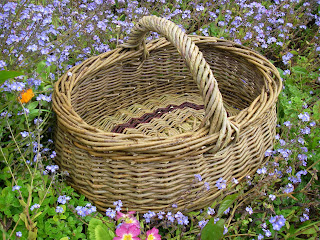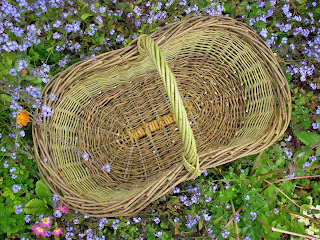This is a snap of the stump of the Sweet chestnut tree we felled last winter for shingles. Already there is strong growth bursting from the base, searching out the light and space created by opening the forest canopy.
The coppicing of trees, if done well, is one of the few methods of husbandry that we do where the net result is largely beneficial for both ourselves and nature in general.
When a deciduous tree is felled during its dormant period (winter), it will regenerate itself the following spring, sending out many stems of new growth.
Cutting a tree in regular cycles can easily increase its life-span by three or four times, also massively adding to the amount of biomass it produces (material we, and other animals can use). This also means the tree locks up more carbon from the atmosphere.
Opening areas of the woodland canopy to sunlight increases growth of under-storey plants and flowers, encouraging insects, birds and mammals. Thus the biodiversity of native species is sustained over the centuries.
The woodland health and ecology is maintained, whilst providing us with fast growing material that can be used in myriad ways to produce countless practical items, shelter, fuel, food etc, not to mention areas of relative wildness essential to human emotional well-being.
Green woodworking and basketry are built on this system of coppicing and pollarding. Craftwork requires excellent quality material; clean, straight, long lengths of wood and withy that can be riven or woven. The coppiced tree uses the enormous energy stored in its root system, to push out new, multi-stemmed growth, and the individual stems must compete for light. The end result is the beautiful coppice wood we desire.
The trees we have felled could, in 10 or 20 years, be coppiced again, to make baskets, fencing, furniture, building timber and many other durable and pleasing things. We will have been involved in a genuinely renewable and sustainable process.
Not so long ago our entire country and much of Europe ran on the products and fuels from coppice woodland. Without fossil-fuels, trees and woodland would be the most important source of energy and material we have. Unlike fossil-fuels we can harvest them in a way that does not harm our ecology.
Trees are the most wonderful things we have at our disposal, and we cant live without them. We should celebrate them more, but understand that we don't need to just preserve them, like natures museum pieces in protected enclaves; they can provide us with almost everything we need if we use them wisely, and we worked out how to do that a long time ago.















